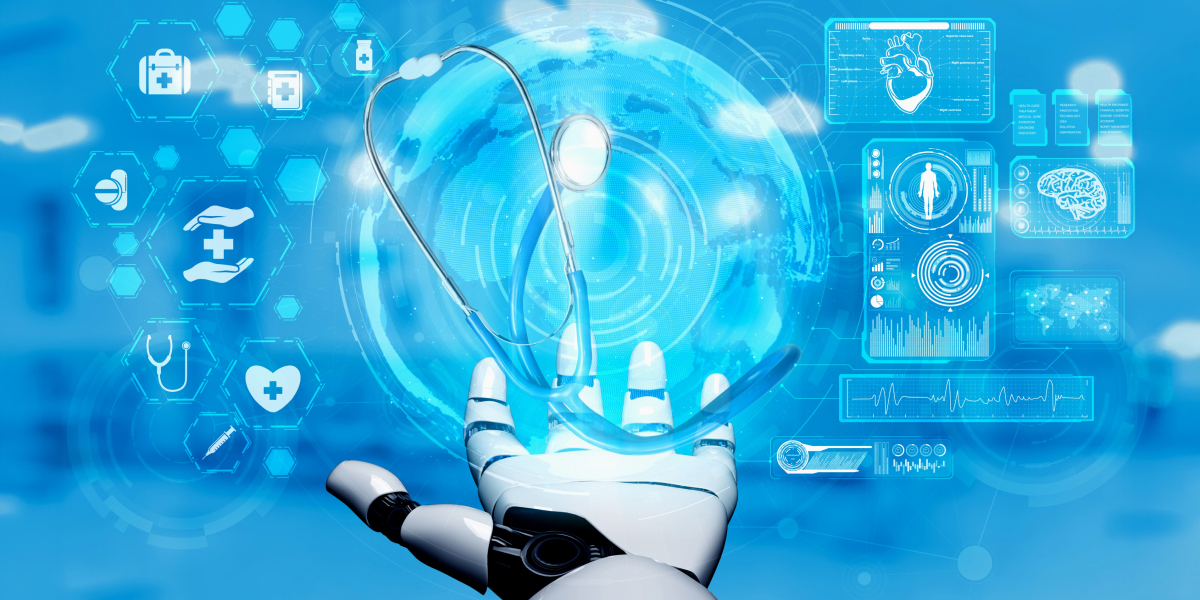Emerging trends steering the future of medical devices

Highlights
- The medical device industry is undergoing transformative shifts, showcasing accelerated growth despite pandemic challenges.
- Key trends in the medical device industry's future include the Internet of Medical Things (IoMT) for informed decision-making, the rise of biometric devices, wearables, Generative AI, and more.
- Digital therapeutics, at-home diagnostics, robotics for minimally invasive operations, and the adoption of 3D printing for personalized medical devices are picking pace as well.
- Companies navigating this dynamic landscape must prioritize regulatory compliance, digital transformation, artificial intelligence, automation, and cybersecurity to drive innovation and improve patient outcomes.
Medical devices comprise a vast array of products and are considered an essential part of the healthcare industry. They are used in the diagnosis, monitoring, and treatment of various health disorders. For those players closing watching the medical devices industry presents a gamut of opportunities and trends to generate revenue. This draws interest from investors and venture capitalists as new technologies emerge and the market shifts.
Despite the supply chain issues and innovation budget cuts during the pandemic, the medical device industry accelerated its growth. This highlighted its potential to improve patient outcomes and healthcare processes. The industry currently focuses on improving patient care and healthcare efficiency and is well-positioned for continuous growth.
Let’s explore the key trends that are going to shape the future of the medical device industry in significant ways:
Internet of Medical Things (IoMT)
There are countless opportunities and trends to harness in the medical device industry with IoMT. It is also known as “smart healthcare,” and uses computer-to-computer connection to gather and process data. Healthcare professionals can make well-informed decisions with the use of this data and achieve the best patient outcomes. IoMT devices and apps maximize operational efficiency while also assisting in the cost-reduction of medications and therapies. To further improve efficiency, the market’s top objective is to determine how well IoMT can be applied in the healthcare industry.
Growing use of biometric devices and wearables
Wearable and biometric technology has seen a surge in its popularity, with mainstream devices like Fitbits and Apple Watches and niche sensors like ECG and PPG sensors empowering consumers and patients. Innovative medical device companies can create value for consumers while easing pressure on hospitals.
Savvy players are witnessing the increased adoption of wearable medical devices as a trend, since they allow users to receive medical monitoring when they are at rest. These devices are worn either as accessories or as part of clothes. They provide information on heart rate, blood pressure, oxygen saturation, weight, respiration, temperature, hydration, heart rate, motion, direction, glucose, blood pressure, and brain activity. This data helps doctors and nurses treat patients more effectively.
Head-mounted displays (HMDs), which include smartwatches, are among the most popular categories of wearable electronics. The surge in generative artificial intelligence (AI) and alternative data investment further accelerates growth in the wearable space.
Generative AI: Transforming the medical devices trend
Generative AI is revolutionizing the medical device industry by improving efficiency, reducing healthcare worker pressure, and enhancing patient outcomes. It can enhance manufacturing and distribution processes through digital factory twins and supply chain simulations. It also helps in diagnosing and recommending treatments, reducing hospital costs and time, and allowing healthcare providers to focus on higher-value tasks. However, strict regulatory processes are necessary to ensure the safe deployment of these technologies.
Related reading: Winning the medical device market: How to build a successful GTM strategy
Rise in digital therapeutics and at-home diagnostics
Digital therapeutics and AI-based medical devices gained popularity during the pandemic for remote treatment and management of various diseases. At-home diagnostics empower patients to manage their health independently. The in-vitro diagnostic market experienced an increase during the pandemic, leading to increased adoption of self-tests for various health conditions. As a clear trend, this growth could open consumer markets for medical device sales and improve healthcare access for patients.
Increased use of robotics: Revolutionizing the medical devices trend
Minimally invasive operations are becoming common due to their benefits such as fewer cuts, smaller incisions, less discomfort, less scarring, increased safety, quicker recovery times, and substantial cost savings. As the worldwide nursing crisis worsened, medical equipment companies in industrialized nations began to develop robots to help nurses perform their responsibilities. The pandemic has increased the need for more assistance. Healthcare facilities can use robotics to relieve staff workers of repetitious tasks including vitals monitoring, bedside transfer of geriatric patients, patient room sanitization, etc.
Read more: Robotic Surgery: A hi-tech path to the future of healthcare
Adoption of 3D printing for medical devices
The medical industry is widely adopting 3D printing as a technology. Applications within it include surgical planning, providing a physical model of the operation area; training; orthotics and prosthetics, etc. Among the medical products made using 3D printing are dental restorations, surgical instruments, and orthopedic and craniofacial implants. 3D-printed medical devices and implants are tailored to a patient’s physiology or a specific operation. This is why they could prove more successful as a trend than mass-produced ones.
In knee surgery, for example, surgeons have found that customized procedures with patient-specific 3D-printed devices and implants shorten recovery times and minimize discomfort. There is a significant opportunity to raise the quality of products used in dental and orthodontic procedures with 3D printing.
With the rising demand and growing trends for technologically advanced medical devices, cybersecurity has also grown to be a major problem. Medical device makers need to safeguard patient data and guarantee device performance and safety in the face of potential threats. Global organizations and regulatory bodies such as the FDA, European Commission, International Medical Device Regulators Forum (IMDRF), and other nations are emulating these regulations and imposing similar criteria on cybersecurity compliance. As a result, medical equipment manufacturers need to be extra cautious when designing healthcare products that are easy to use and well-safeguarded from online attacks.
Future insight
The medtech industry is experiencing rapid growth and the potential to revolutionize global healthcare. Emerging companies and investors should tap into the opportunities in medical technology. However, the regulatory environment and commitment to sustainability are crucial. Companies must work closely with regulators and industry experts to ensure product standards and safe deployment. Adopting digital transformation, artificial intelligence, automation, and cybersecurity compliance can help companies to stay ahead and improve patient outcomes.
Our comprehensive healthcare research and information services empower global leaders across life science domains. If you’re seeking to harness current generative AI market trends and capitalize on new opportunities, Netscribes is your partner in navigating the dynamic healthcare landscape. Contact us today.






